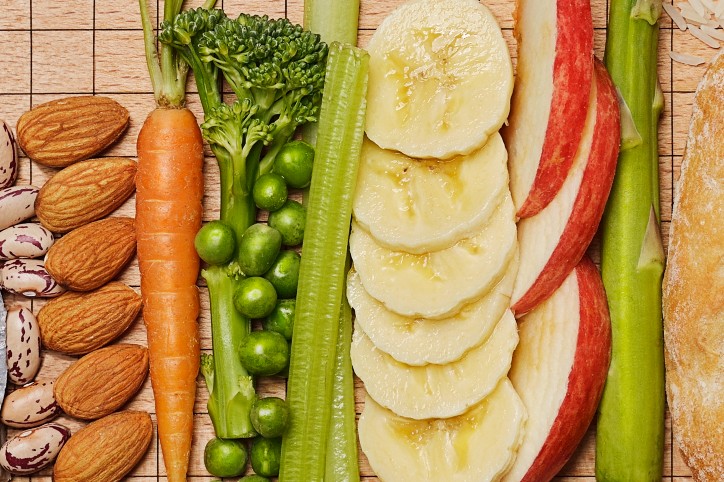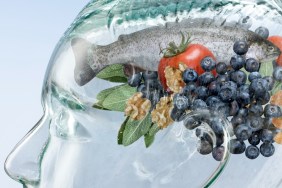Whole Foods Market is always ahead of the game when it comes to food trends, which is why we’re always curious to see what lands on their annual list of anticipated food trends.
Whole Foods just released its seventh annual list and we have to say we couldn’t have predicted most of them!
Buzz-less spirits, yuzu, Reducetarianism (more on what the heck that is later) and functional beverages made with prebiotics and botanicals are among the food influences expected to rise in popularity in the next year.
For the first time, Whole Foods is offering what they call a Trends Discovery Box – a curated assortment of 10 products to represent each of the 10 trends in the forecast. The boxes, available for $30 (valued at over $50) allow consumers the chance to taste all the trends at once.
“Last year, we saw tremendous pandemic-related shifts in grocery buying habits as the world adjusted to spending more time at home. As the food industry slowly adjusts to a new normal, we expect to see consumers prioritize food and drink products that deliver additional benefits—like functional sodas and tonics— and products that support their sense of well-being, like urban garden greens and products grown with farming processes that help address soil health,” said Sonya Gafsi Oblisk, chief marketing officer at Whole Foods Market.
Here’s a look at the 10 need-to-know food trends that will shape the way we eat next year.

ULTRAURBAN FARMING
“In 2013, Whole Foods opened a store in Brooklyn with a Gotham Greens greenhouse on top, providing fresh and sustainably grown herbs and salad greens in greenhouse systems using sunlight and 100% renewable electricity. Since then, innovation in indoor farming has ballooned, from hydroponics and aquaponics to mushrooms grown above our grocery aisles — and even fresh produce grown by robots. Producers are finding new, boundary-pushing ways to grow hyper-local crops and maximize efficiency.”
YOU DO YUZU
“Yuzu — a lesser-known citrus mainly cultivated in Japan, Korea and China — is taking the culinary world by storm. Tart and sour, this tangerine-sized fruit is popping up in vinaigrettes, hard seltzers, mayos and more.”
REDUCETARIANISM
“Are you a plant-curious eater who isn’t ready to give up meat entirely? Try reducetarianism — reducing consumption of meat, dairy and eggs without cutting them out completely. When animal products are on the menu, reducetarians make them count, opting for premium grass-fed meat and pasture-raised eggs.”
HIBISCUS IS HAPPENING
“Hibiscus has a long and delicious history in the world of teas, and customers have historically kept it in their rotations for its vitamin C content. Now, producers are harnessing its sweet, tart flavor in the form of fruit spreads, yogurts and beyond. Of course, beverage makers are keeping up, leaning on hibiscus to craft delicious drinks that adopt its signature hot-pink hue.”
BUZZ-LESS SPIRITS
“The dialed-down spirits category experienced record growth in our stores this year. With millennials and Gen Z-ers dabbling in ‘drysolation’ during the pandemic, we don’t see the sober-curious mindset going away anytime soon. Enter a new lineup of drinks that provide the taste and sophistication of cocktails without the buzz.”
GRAINS THAT GIVE BACK
“We’re talking grains grown via agriculture practices and farming processes that help address soil health. Kernza – a perennial grain developed by The Land Institute with a sweet, nutty flavor and long roots – helps with nutrient cycling and overall soil ecology. Find it in cereals and even beer.”
SEIZE THE SUNFLOWER SEED
“After fueling grand slams and double plays for years, sunflower seeds are branching out of the ballpark and sliding into crackers, ice creams and creamy cheeses. Delivering protein and unsaturated fats, these mighty little seeds are transforming the 21st century snack game. Parents, take note — many sunflower seed–based products are made without nuts, which means allergy-friendly school snacks (just make sure to always check the label).”
MORINGA’S MOMENT
“Often called the ‘miracle tree,’ moringa is traditionally used as an herbal remedy in India, Africa and beyond. Moringa leaves have plenty of nutrients, and these fast-growing, drought-resistant trees have been used as a source of food to fight malnutrition in certain parts of the world. Gaining steam in the U.S. as matcha’s latest alternative, it can be found in powder form and added to make magic in smoothies, sauces and baked goods. It’s also showing up in unexpected products like frozen desserts, protein bars and packaged grain blends.”
FUNCTIONAL FIZZ
“Today, bubbly beverages are doing double duty. That’s right, people are looking for sparkling drinks that not only taste great but also offer ingredients that balance out the sweetness. We’re talking soda with probiotics and fizzy tonics with added prebiotics, botanicals and more.”
TURMERIC TAKES OFF
“Turmeric, aka ‘the golden spice,/ has been used for centuries in Ayurveda and traditional Chinese medicine, and has become popular in the U.S. as a dietary supplement. While golden milk lattes and turmeric supplements are nothing new, the spice is taking root as an ingredient in packaged foods like cereals, sauerkrauts and even plant-based ice cream sandwiches. People want to have their turmeric and eat it too.”








